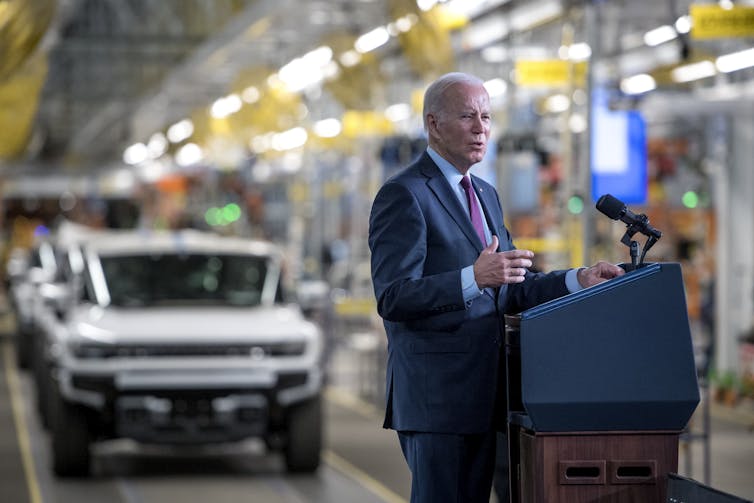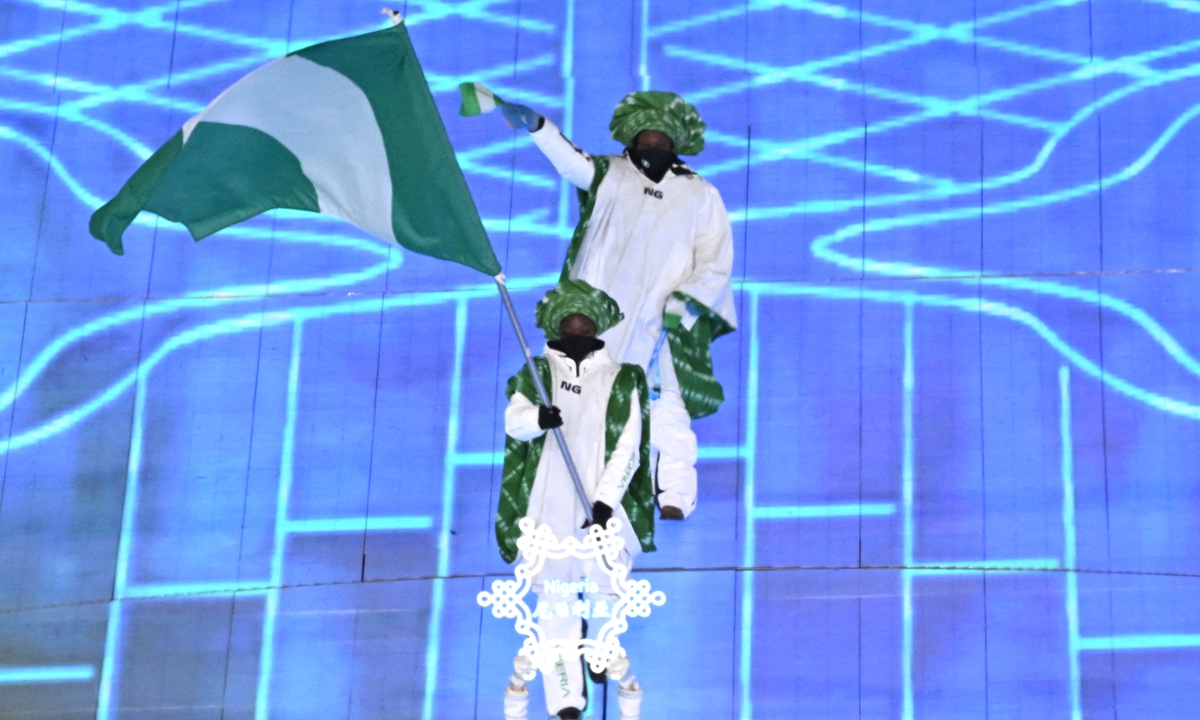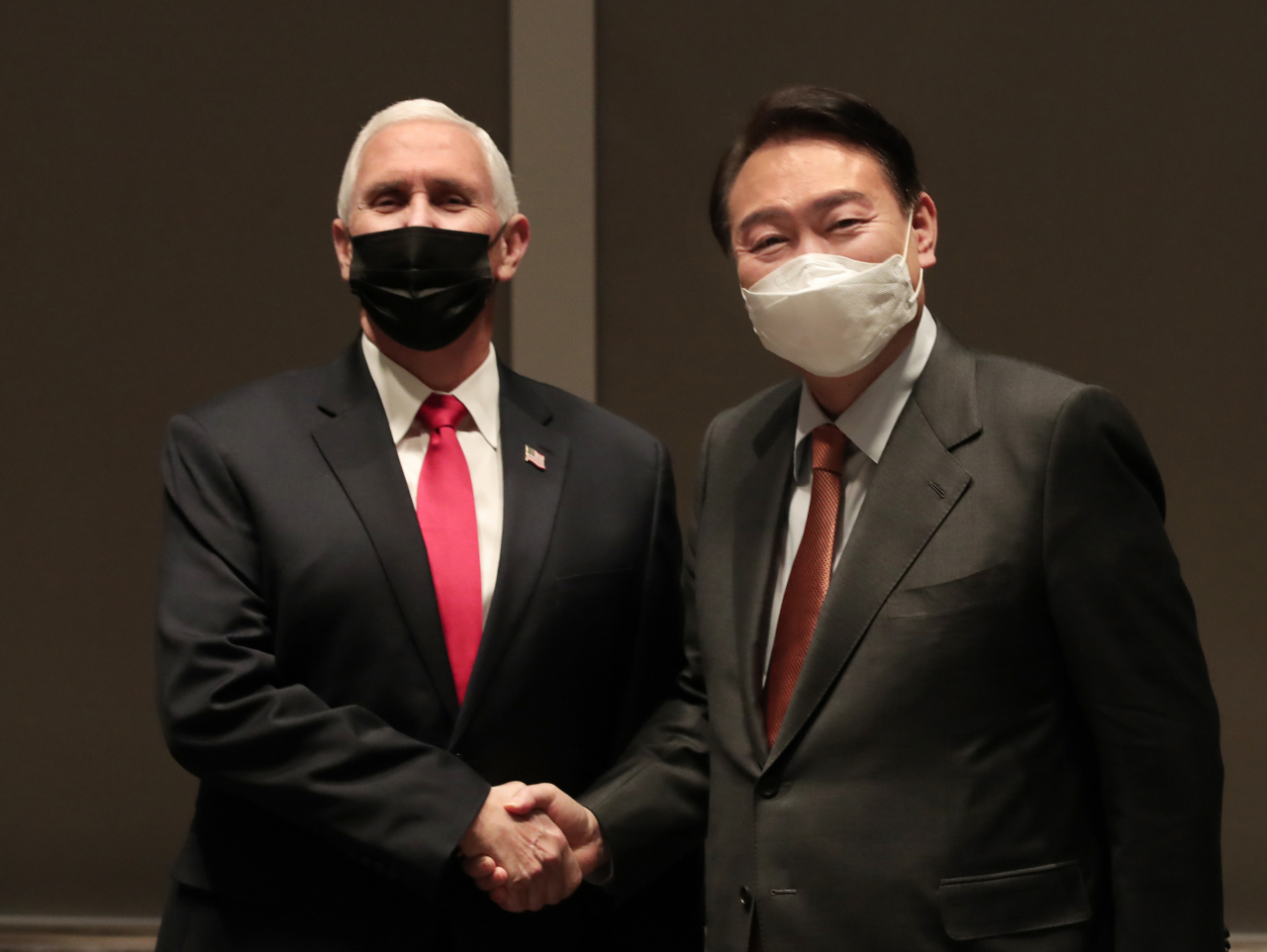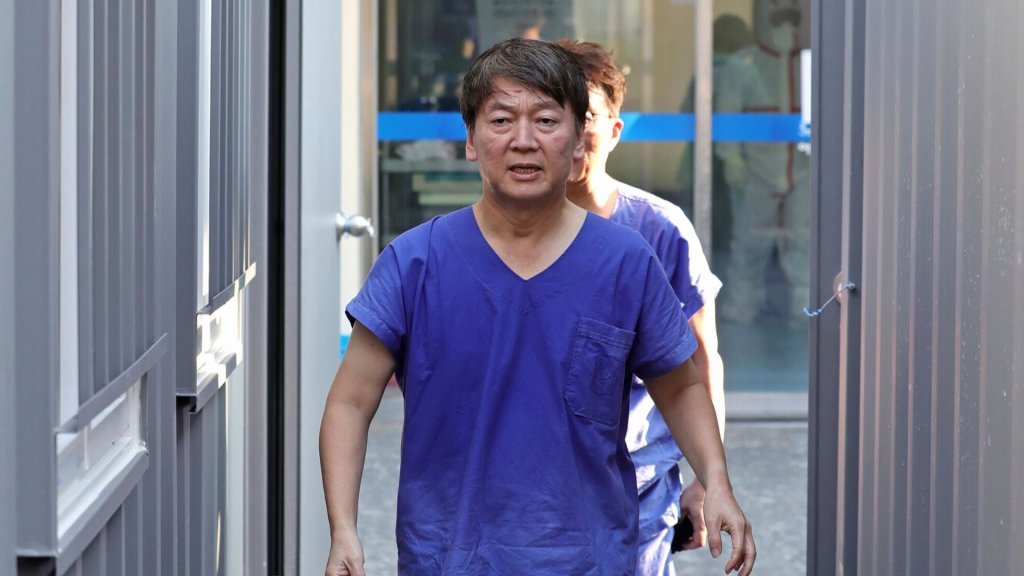Published on February 12, 2022
By Creative Commons

Above: Photo / Collage / Lynxotic / Adobe Stock
Without more regulation, this will continue,” said one critic. “We need governments and regulatory bodies to step up and put an end to this greenwashing trend.”
Anew study out Monday evaluates the public climate pledges made by 25 of the world’s biggest corporations and concludes they “cannot be taken at face value” because the vast majority of firms analyzed are exaggerating the nature of and progress toward their goals—a greenwashing trend that critics say will continue in the absence of stronger regulation.
“Setting vague targets will get us nowhere without real action, and can be worse than doing nothing if it misleads the public.”
Providing further evidence of the fallacies of “net-zero,”the Corporate Climate Responsibility Monitor 2022 finds that net-zero pledges made by several of the world’s largest companies aim to reduce aggregate greenhouse gas emissions across their full value chains by only 40%, at most, from 2019 levels—a far cry from the 100% implied when they claim to be pursuing “carbon neutrality.”
According to the assessment conducted by NewClimate Insitute in collaboration with Carbon Market Watch, just one company’s net-zero pledge was determined to have “reasonable integrity.” Three were deemed to have “moderate integrity,” 10 “low integrity,” and the remaining 11 “very low integrity.”
“We set out to uncover as many replicable good practices as possible, but we were frankly surprised and disappointed at the overall integrity of the companies’ claims,” lead author Thomas Day of NewClimate Institute said in a statement.
“As pressure on companies to act on climate change rises, their ambitious-sounding headline claims all too often lack real substance, which can mislead both consumers and the regulators that are core to guiding their strategic direction,” said Day. “Even companies that are doing relatively well exaggerate their actions.”
The analysis turned up zero pledges with “high integrity.” Maersk came out on top, with “reasonable integrity,” followed by Apple, Sony, and Vodafone with “moderate integrity.”
Meanwhile, the headline pledges of Amazon, Deutsche Telekom, Enel, GlaxoSmithKline, Google, Hitachi, IKEA, Vale, Volkswagen, and Walmart were rated as having “low integrity.” Those of Accenture, BMW Group, Carrefour, CVS Health, Deutsche Post DHL, E.ON SE, JBS, Nestlé, Novartis, Saint-Gobain, and Unilever were considered to have “very low integrity.”
Although all 25 companies examined in the report establish “some form of zero-emission, net-zero, or carbon-neutral target,” the authors note, just three companies—Maersk, Vodafone, and Deutsche Telekom—make clear commitments to decarbonizing 90% of their entire value chains.
By contrast, at least five companies would effectively decrease their emissions by less than 15%, often by excluding “upstream or downstream emissions”—pollution generated by activities indirectly linked to a company.
Day told The Guardian that “it’s short-term action that’s the most important thing, in the climate crisis.”
Nevertheless, noted the British newspaper, “the report show[s] that the companies surveyed would only cut their emissions by about 23% on average by 2030, falling far short of the figure of nearly halving in the next decade that scientists say is needed to limit global heating to 1.5ºC.”
Despite the damning findings, some companies doubled down on their claims of progress. In a statement shared with BBC, Amazon said: “We set these ambitious targets because we know that climate change is a serious problem, and action is needed now more than ever. As part of our goal to reach net-zero carbon by 2040, Amazon is on a path to powering our operations with 100% renewable energy by 2025.”
However, Amazon is one of several companies that have donated to right-wing Democratic Sens. Kyrsten Sinema (Ariz.) and Joe Manchin (W.Va.), who teamed up with the GOP to torpedo the Build Back Better Act—a piece of legislation that, among other things, would have accelerated the clean energy transition.
According to climate justice advocates, net-zero pledges are inadequate because they are “premised on the notion of canceling out emissions in the atmosphere rather than eliminating their causes.” Because the practice enables powerful entities to continue with business as usual in some places as long as they fund projects that purportedly slash pollution in other places, there is little to no evidence that overall emissions will be sufficiently reduced.
The new study shows how several corporations are inflating the extent of their ambition and progress by taking advantage of ambiguous terms like net-zero and carbon-neutral and by disregarding upstream or downstream emissions.
“Many company pledges are undermined by contentious plans to reduce emissions elsewhere, hidden critical information, and accounting tricks,” states a summary of the report. It continues:
The exclusion of emission sources or market segments is a common issue that reduces the meaning of targets. Eight companies exclude upstream or downstream emissions in their value chain, which usually account for over 90% of the emissions under their control. E.ON may exclude market segments that account for more than 40% of its energy sales; Carrefour appears to exclude locations that account for over 80% of Carrefour branded stores.
24 of 25 companies will likely rely on offsetting credits, of varying quality. At least two-thirds of the companies rely on removals from forests and other biological activities, which can easily be reversed by, for example, a forest fire. Nestlé and Unilever distance themselves from the practice of offsetting at the level of the parent company, but allow and encourage their individual brands to pursue offsetting to sell carbon-neutral labeled products.
Some apparently ambitious targets may lead to very little short-term action. It may be possible for CVS Health to achieve their 2030 emission reduction target with limited additional action, since the target is compared to a base year with extraordinarily high emissions. GlaxoSmithKline may delay the implementation of key emission reduction measures until 2028/2029, ahead of its 2030 target.
As The Guardian reported, “Day said using offsetting tended to obscure whether companies were making genuine progress on cutting their own emissions, or hiding behind offsets to achieve a notional net-zero.”
“It’s better practice not to offset—it’s more transparent and constructive,” said the researcher. “Companies should not be claiming they are net-zero by 2030 unless they are reducing their emissions by 90% by then.”
The failure of so-called “corporate social responsibility” initiatives to deliver on promises to improve the well-being of workers and ecosystems is a longstanding pattern, which is why many progressive critics have called them public relations gimmicks.
According to the new report: “The rapid acceleration of corporate climate pledges, combined with the fragmentation of approaches means that it is more difficult than ever to distinguish between real climate leadership and unsubstantiated greenwashing. This is compounded by a general lack of regulatory oversight at national and sectoral levels. Identifying and promoting real climate leadership is a key challenge that, where addressed, has the potential to unlock greater global climate change mitigation.”
Gilles Dufrasne from Carbon Market Watch said that “misleading advertisements by companies have real impacts on consumers and policymakers.”
“We’re fooled into believing that these companies are taking sufficient action, when the reality is far from it,” said Dufrasne. “Without more regulation, this will continue. We need governments and regulatory bodies to step up and put an end to this greenwashing trend.”
“Companies must face the reality of a changing planet,” he added. “What seemed acceptable a decade ago is no longer enough. Setting vague targets will get us nowhere without real action, and can be worse than doing nothing if it misleads the public.”
In a Monday op-ed, Penn State University climate scientist Michael Mann and Climate Communication director Susan Joy Hassol drew attention to the devastation wrought by corporations that have denied facts to delay necessary political-economic transformations—pointing specifically to a 40-year-long disinformation campaign bankrolled by fossil fuel interests.
Much of the damage caused by extreme weather disasters “could have been avoided had we acted decades ago when the scientific community—and indeed fossil fuel industry’s own scientists—recognized we had a problem,” the pair wrote in The Hill. “While the best time to act boldly to prevent climate catastrophe was decades ago, the second-best time is now.”
Given that the 25 firms analyzed account for roughly 5% of global greenhouse gas emissions, researchers stressed how important it is for them to quickly adopt and scale up best practices.
“If we are to meet this monumental challenge, we will need to use all the arrows in the quiver,” wrote Mann and Hassol. “We must incentivize the energy industry to move aggressively toward clean, renewable energy.”
They concluded, “There is no time left to waste, and failure is not an option.”
Originally published on Common Dreams by KENNY STANCIL and republished under a Creative Commons (CC BY-NC-ND 3.0)















